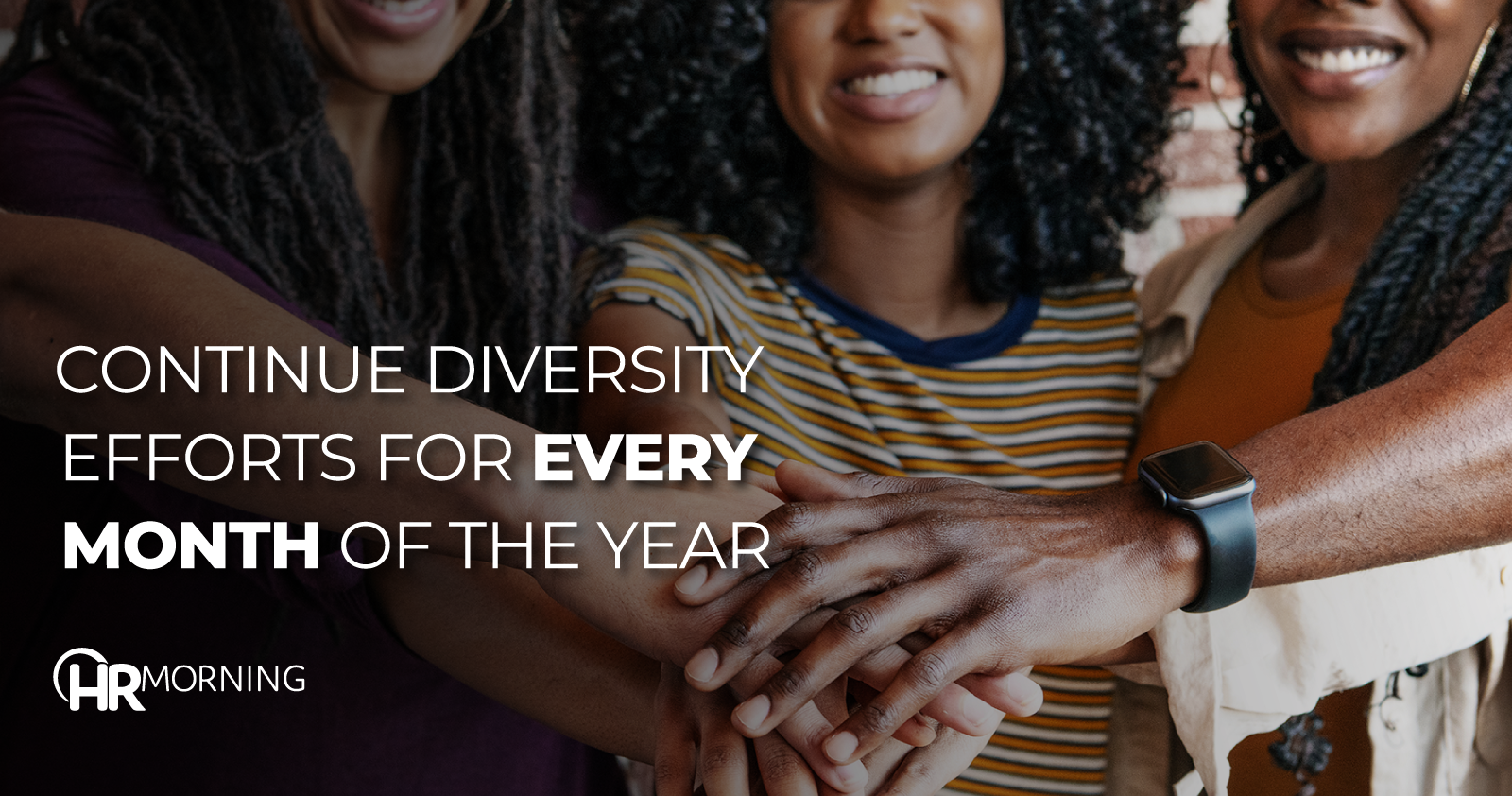Black History Month gives HR the perfect opportunity to shine a light on what their company is doing to increase diversity and promote equity within the workplace. Set in February, it gives a perfect opportunity to update diversity, equity and inclusion (DEI) initiatives.
Plus, Black History Month can be a great time to provide education to non-Black workers on topics like microaggressions and implicit bias, and create space for Black workers to share their experiences.
However, once Black History Month is over, many companies scale back these efforts to focus on other things throughout the year until the next time February rolls around. This can unintentionally give off the impression that supporting Black workers and the Black community, in general, is only necessary one month in the year, instead of a continuous effort.
To better support Black workers, use the steam you create during Black History Month to keep efforts going all year long.
How to begin taking action
Many tend to shy away from talking about race and equity for fear of getting it “wrong” or saying the wrong thing. “Imperfect action is the best (and often the only) way to make your company more diverse and inclusive,” says Danielle Little, Director at Peoplism. “And Black History Month can serve as a pivotal moment for you and your company to take these imperfect, yet forward-moving steps to supporting Black employees.”
To begin implementing meaningful initiatives, you first have to ask yourself questions to evaluate what the state of your workplace is like for Black workers. “Take the time to really reflect and write down your response, and next year, you can use these notes to see if you’ve made any meaningful changes,” suggests Little.
Here are three questions for leaders to ask themselves – and why it’s important.
1. When was the last time I (or my team) interviewed a Black candidate? What was the role and was this person hired? It’s important for leaders to evaluate recruiting and hiring practices to make sure they’re diverse and inclusive. “The answer to this question may make you reconsider your recruiting and hiring practices to ensure Black candidates are being proactively sourced and fairly evaluated,” says Little.
2. Who are the potential next group of leaders in my company? Is anyone in this group Black? “Unconscious bias shapes who we believe has potential,” says Little. “Asking yourself explicitly who you are supporting, sponsoring and giving opportunities to is crucial to directly confront potential biases.”
3. When was the last time a Black employee was given a high-profile assignment on my team? “This question makes you stop and consider how the assignments that are integral to career development (and promotions) are being distributed on your team,” says Little.
Once you’ve assessed your workplace, you can spot pain points for Black employees or areas that could be improved to help shape your DEI strategy and initiatives.
Best practices for allyship
Typically, there’s an increased focus on diversity efforts and allyship during Black History Month, but sometimes those efforts can fizzle out as the year goes on. Here are some best practices to make sure your company is prioritizing organizational allyship the whole year, from Peoplism co-founder Dr. Liz Kofman-Burns.
- Don’t rush: “Think of pressure as momentum, and use it to build a strategic plan. Communicate to your company that this work will not be solved with any statement or training you take on this month, and rather than exclusively focusing on what immediate action you have to take, commit to taking a holistic look at company processes, systems and employee experiences,” says Kofman-Burns.
- Don’t rely solely on DEI task forces or Employee Resource Groups (ERGs): “[Those running taskforces and ERGs] are employees who already have full-time jobs,” says Kofman-Burns. “While they may be dedicated and passionate about D&I, they shouldn’t be expected to work a ‘second shift’ to take on such a large and complex undertaking.”
- Don’t focus on hiring only Black employees: Conversations about racial equity “can become laser-focused on sourcing and recruiting Black-identifying candidates since they tend to be one of the most underrepresented groups across many industries,” says Kofman-Burns. “It’s important to know that this is only one small part of creating a more inclusive and equitable company. In order to retain a diverse pool of talent, you will need to adequately address issues related to inclusion, equity and belonging as well.”
Impactful initiatives: 3 ideas for HR
It’s important to choose the right initiatives that will build momentum throughout the year instead of a one-and-done education or training session. Here are a few ideas to get started on increasing diversity, equity and inclusion across your company during Black History Month and beyond.
- Identify and track key metrics to continuously assess diversity efforts and identify areas of growth
- Create and continuously support ERGs for employees who belong to minority groups, and
- Encourage and provide career development opportunities for employees of color by bringing qualified employees into leadership discussions and other high-level roles.



